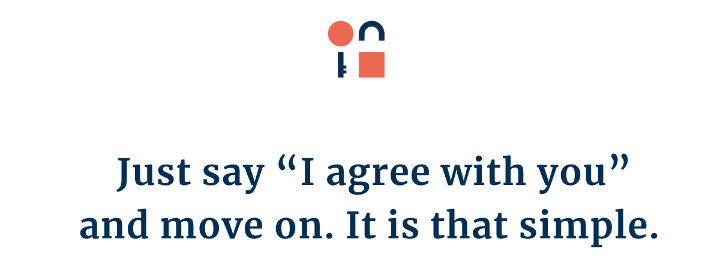9 Meeting Rules You Need to Implement Today
How many of us have found ourselves saying “that meeting was such a waste of my time”?
Learn the 9 meeting rules that will save you time, keep your team aligned, and produce more productive outcomes.
THE RULES
As the CEO of your organization, you have to teach your team how to make meetings run effectively in your organization. You train your team on everything else around how to do their job effectively and efficiently yet training them on how to run and productively take part in meetings is often overlooked.
Your staff has probably picked up some bad habits from previous managers or companies. Training them properly does not have to be a difficult process. Here are 9 Meeting Rules you need to know.
1. ONLY INVITE ESSENTIAL PEOPLE
Your entire team does not need to always be at every meeting. Only invite the people who are going to help influence the end result. Staying informed and being aligned does not require attending each meeting. If someone needs to be informed, for example the person performing the decided outcome, send them the meeting notes. Passing on this information can be done through a shared document or recorded video, it does not need to be another meeting.
2. NO AGENDA NO ATTENDA
It has become an assumption that if someone puts it on your calendar, then it must be important. But that is not alway the case. If you don’t send an agenda or explanation for the purpose of the meeting, then how do you expect anyone to come prepared? By creating or receiving an agenda, it shows that the host has done thorough due diligence and is prepared for the meeting. They know they are asking the right people for the right things. This allows you and others to be in the right mindset and to come ready to solve or make a decision about a topic. It also allows you to determine if you or anyone else needs to be added or removed from the attendee list. Thus keeping your calendar open for more important things.
3. SEND ALL NECESSARY DOCUMENTS 24 HOURS PRIOR
One of the quickest ways to save time and stick to the agenda is to send documents, collateral or any prep work at least 24 hours before your scheduled meeting. If half of your meeting time is spent reviewing something, you have less dedicated time to solve the issue. By sending it ahead of time, attendees can come with thoughts, and ideas already prepared, so you are getting the most out of your meeting time.
4. BE ON TIME EVERY TIME
If the meeting starts at 9 AM and you are waiting on one person, go ahead and start without them. As the host, it is your responsibility to create and stick to the agenda you sent for the meeting. You and your team are busy and time can be hard to come by. Setting clear expectations will keep everyone on the same page. It is a healthy practice to be mindful and respectful of people’s schedules, both as the host and an attendee.
5. ALWAYS REVIEW OUTCOMES AND ACTION ITEMS
Referring back to rule #2, you should have an agenda for what your meeting will entail. Your expected outcome should also be included there, so the attendee knows what is expected of them and they can be better prepared to be productive in your meeting. You should also state and remind your attendees at the beginning of the meeting what your desired outcome is. This will help keep the meeting on track and the attendees focused. You did not have a productive meeting if everyone leaves it feeling like they have no idea what it was about or what to do next. Outcomes, action items, and due dates are a vital part of every meeting.
6. BE FULLY PRESENT
Being fully present not only helps keep the meeting on track, it is respectful to everyone else attending. Everyone has made the commitment to be present, so be present. Don’t check your phone or your email or multitask. It may seem like it will only take a few seconds to respond to the email that just popped into your inbox, but you are no longer actively engaged in the meeting at hand. Participate in the conversation, suggest ideas, make sure the meeting has your full attention. It will go by quicker and you can get back to your other tasks that require your full attention.

7. NO PIGGYBACKING
This rule may be new to you. Piggybacking is when someone agrees with a statement or comment and they repeat back what they agree with in their own words. This is where a lot of meetings lose momentum. Unless your comment adds additional value or context, it is not needed. Just say “I agree with you” and move on. It is that simple. You do not need to repeat what that person just said. This will save time and allow you to get to the root of the meeting quicker. Bonus tip: make it an engaging, interactive part of the meeting. Have attendees hold up a sign that reads, ‘I agree’ or if on a virtual platform, have them hold a thumbs up or use an emoji that lets people know, yes I’m aligned with you on that and I agree, without having to interrupt the meeting by repeating it.
8. ASK “BY WHEN”
At the end of the meeting, review your action items. Ask “who” is going to do what” and “by when”? The “by when” is the most important question. If someone assumes you need something 2 weeks from now, you are going to be frustrated with them when you really need it in 2 days. Confirming deadlines follows closely with rules #5 – reviewing action items at the end of the meeting.
9. END ON TIME
This one seems like a no brainer, but you will be shocked by how many meetings go over the allotted time. This causes attendees to be late to their next appointments and frustrates them that nothing was accomplished and they wasted their time. Keep an eye on where you are throughout your meeting. Refer to your agenda and the dedicated times you have for each session. If you need to adjust during the meeting, prioritize what you need most to keep the meeting from going over. Appoint someone to help you with time tracking, if needed.
By following these rules, your meetings will change, for the better. Admittedly, it is a mindset shift. If you need to start with one rule and slowly build on them, that is fine. Some of these rules will come much easier than others and you may already be doing them. But once you have them all working and your team is onboard, expectations will be much clearer and that will be a game changer for your meetings.

Written by Jennifer Faught, President and COO of BrainTrust. Certified Scaling Up Coach and self proclaimed meetings expert.









